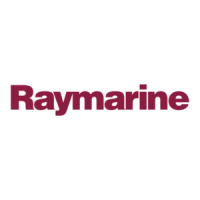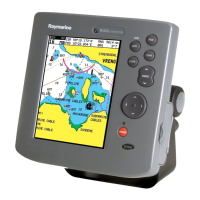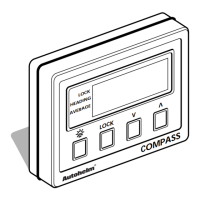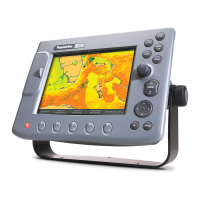•Iconanimated-shnderisoperating.
•Iconstatic-theshndertransducerisconnectedbutnot
transmitting.
•Icongreyed-out-noshndertransducerisconnected.
Howtheshnderworks
TheshnderapplicationusesaDigitalSounderModule(DSM)and
asuitablesonartransducer.TheDSMinterpretssignalsfromthe
transducerandbuildsupadetailedunderwaterview.
Thetransducerislocatedonthebottomoftheboat,itsendspulses
ofsoundwavesintothewaterandmeasuresthetimeittakesforthe
soundwavetotraveltothebottomandback.Thereturningechoes
areaffectedbybottomstructureandbyanyotherobjectsintheir
path,forexamplereefs,wrecks,shoalsorsh.
Colorsareusedonthedisplaytoindicatethestrengthofthereturns.
Youcanusethisinformationtodeterminethebottomstructure,
thesizeofshandotherobjectsinthewater,suchasdebrisor
airbubbles
Note:Sometransducersincludeadditionalsensorstomeasure
watertemperatureand/orspeed.
12.2Thesonarimage
Interpretingtheseabedusingsonar
Itisimportanttounderstandhowtocorrectlyinterprettheseabed
structurerepresentedintheshnderdisplay.
Theseabedusuallyproducesastrongecho.
Thefollowingimagesshowhowdifferentseabedconditionsare
representedinthesonardisplay:
D6855-2
A hard bottom (sand) produces a thin line
A soft bottom (mud or seaweed cover) produces a wide line.
The dark layer indicates a strong signal.
A rocky or uneven bottom or a wreck produces an irregular
image with peaks and troughs
Thedarklayersindicateagoodecho;thelighterareasindicate
weakerechoes.Thiscouldmeanthattheupperlayerissoftand
thereforeallowingsoundwavestopasstothemoresolidlayer
below.
Itisalsopossiblethatthesoundwavesaremakingtwocomplete
trips–hittingtheseabed,bouncingoffthevessel,thenreecting
Usingtheshnder
165
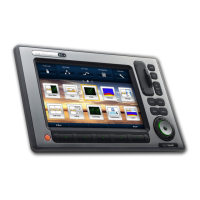
